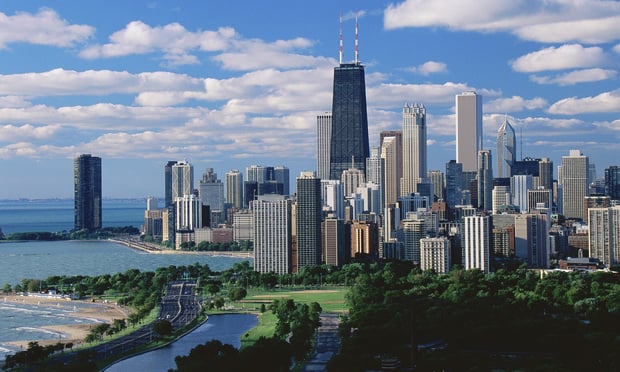CHICAGO—Millennials and their love of collaborative, urban spaces has transformed much of the modern office environment, and their penchant for online commerce is also changing the landscape of industrial real estate. John Morris, leader of industrial services group for the Americas at Cushman & Wakefield, addressed last week's Fall Meeting of the Society of Industrial and Office Realtors in Chicago on the topic, but began by dispelling the impression that online commerce is somehow doing away with traditional retail.
“Online adoption is stable at this point,” he said. Although online sales were soaring just a few years ago and seemed unstoppable, Morris displayed a chart that showed growth has steadied to about 15% per year. Furthermore, it does seem that “the rate of growth is beginning to slow a tiny bit,” perhaps to about 13% to 14% per year. That's still quite robust, but other retail sales are also seeing remarkably steady growth each year, albeit at a rate of roughly 5%.
There are some signs that high-tech tools and traditional retail will find ways to co-exist, Morris added. A grocer in South Korea, for example, now allows shoppers to quickly move through the store and choose products by touching a screen, rather than loading up a cart, and then delivers all chosen items to their doorstep in a few hours. Such solutions open up opportunities for providers of industrial real estate, since these same-day delivery operations will require new, customized facilities.
Even companies without soaring sales are transforming their supply chains, he said. Proctor & Gamble has recently added about six million square feet of distribution space to its portfolio, and although overall sales growth remains somewhat flat, the corporate giant envisions its customers will regularly order P&G products for quick delivery by using their iPhones and other online methods, and needs an entire infrastructure to back up this demand.
And the value of the needed infrastructure can be significantly greater than traditional distribution facilities. Morris presented a case study of two similar industrial properties, but with one dedicated to e-commerce and the other a more traditional distribution facility. Both had nearly identical land costs, about $4 million, and soft costs were also nearly the same. However, due to the far more complex and detailed tasks that workers in the e-commerce facility need to carry out, at $61 million the hard costs for this building was far greater than for the distribution building, which totaled $26 million, for total costs of $70 million and $34 million respectively.
Some of the e-commerce structures' complexity comes from the demand by all these new consumers for certain personal touches on their deliveries, such as cards, special wrapping and the like. "Customization used to happen at the retail level; and its all gone back to the warehouse.”
© Touchpoint Markets, All Rights Reserved. Request academic re-use from www.copyright.com. All other uses, submit a request to [email protected]. For more inforrmation visit Asset & Logo Licensing.







